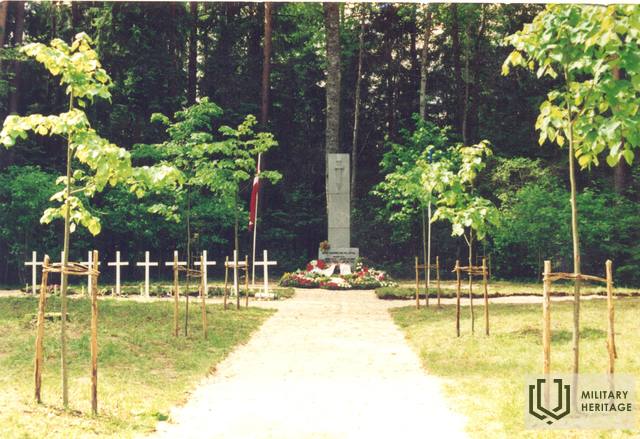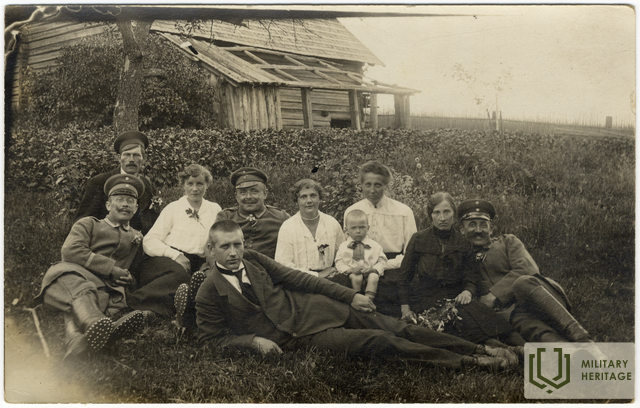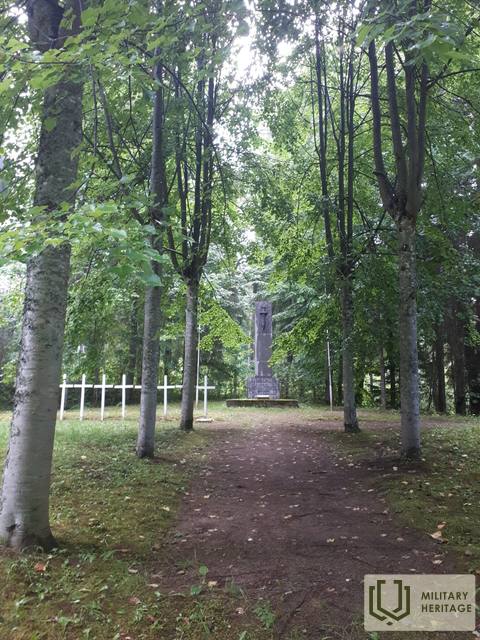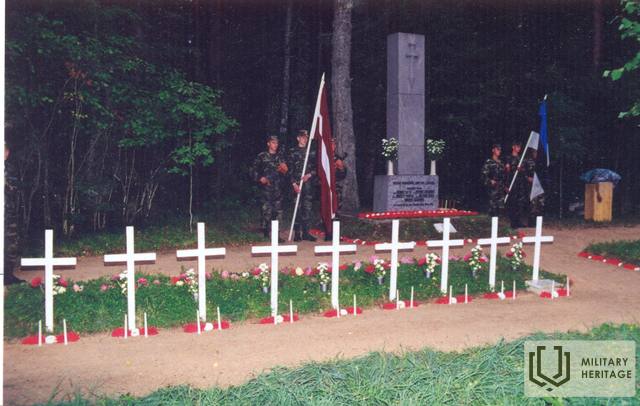Karva Brothers Cemetery Memorial site

Located on the side of the Alūksne - Ape road near Zuši mājas, south of Karva, at the turnoff to Rezakas.
The monument was unveiled on September 12, 1937. The granite stele was made at the O. Dambekalns stone quarry in Riga, after a design by the War Construction Administration architect Vemers Vitands.
In the autumn of 1975, local communists destroyed the monument. On March 30, 1989, the Alūksne District Council made a decision to restore the monument, and on April 30, 1989, a temporary wooden memorial in the form of a Latvian grave marker was installed in its place, made by Jānis Jaunzems, a worker at the State Electrical Factory (VEF). The inscription on it read: “The Karva Brothers Cemetery Monument will be restored here.”
At that time, the nearby Brothers' Cemetery was also improved.
In 1993, thanks to the initiative of Ulda Veldre, head of the Alūksne Brothers' Cemetery Committee, the restoration work of the memorial site resumed. The new monument was made by the Cēsis stonemason brothers Aivars, Austris and Auseklis Kerliņi.
The monument was unveiled on June 11, 1994.
Four soldiers of the 5th company of the Valmiera Infantry Regiment are buried in the fraternal cemetery - Jēkabs Sukse, Pēteris Leitlands, Ernests Puķītis and Gustavs Ozols, who fell in the battles near Zuši on April 2, 1919. The fifth soldier buried in the mid-1930s was Roberts Glazners, a soldier of the Valmiera Regiment who disappeared without a trace on March 31, 1919 near Jaunā muiža. Initially, he was buried as an unknown, but later his name was clarified and engraved on a monument. In turn, the fifth soldier who fell in the Battle of Zuši, Augusts Dzedons (Ziedons), is buried in the Apekalna cemetery.
A memorial plaque has been installed at the foot of the monument to Jānis Goldes (1891–1952), a participant in the Battle of Eels, who died in the communist concentration camp in Inta, Komi.
The second memorial plaque, unveiled on August 23, 1992, is installed near one of the wooden crosses and is dedicated to Corporal Pēteris Jansons of the 7th Sigulda Infantry Regiment, who was murdered by the departing communists on July 7, 1941.
Used sources and references:
Lismanis, J. 1915-1920. In memory of battles and fallen soldiers: Memorial sites of the First World War and the Latvian Liberation Struggle. Riga 1999, p. 18.
History of Alūksne. End of the 19th century - January 2, 1920. Research materials of the Alūksne Museum. No. 4-13.
History of the Latvian Liberation War. Edited by: Peniķis, M. Vol. 1, Riga: Literatūra, 1938. pp. 156-178.
History of the Valmiera Infantry Regiment 1919-1929. Riga: Valters and Rapa, 1929. pp. 20-67.
Related timeline
Related topics
Related stories
Anšlavs Eglītis's memories of the Latvian War of Independence and the events of 1919 in Alūksne
On March 27, 1919, the 1st Valmiera Infantry Regiment, together with the Estonian Guards (kaitselit) battalions of Tallinn (then Rēvele) and Tērbatas, as well as three armored trains, began the liberation of Latvia from the Bolsheviks from the banks of the Melnupe River.














